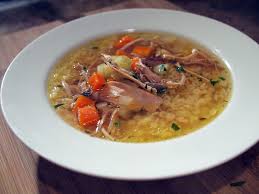Chicken Soup for the Jewish Neshama

There’s a cute joke on the website, Harry Leichter’s Jewish Humor: “If Microsoft were Jewish, computer viruses could be cured with chicken soup.”What better way to introduce this iconic and venerated Jewish food, long hailed as the panacea for whatever ails us. It’s not clear who coined the term “Jewish penicillin” for chicken soup back in the last century, but the name has stuck. Many of us will be enjoying a steamy bowl of chicken soup, perhaps with kreplach or kneidlach, during the upcoming holidays. And of course, many enjoy this treat each and every Shabbos. It is satisfying and soul-warming – the quintessential Jewish comfort food. Moreover, it doesn’t take a million-dollar grant from the National Institutes of Health to prove that chicken soup is indeed healthy.











